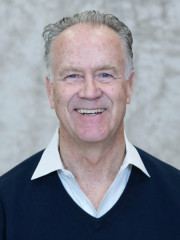Todd Swanstrom Works to Address the Need for Home Repairs in St. Louis and Beyond
"The research completed by Professor Swanstrom and his team allowed the Home Repair Network to jumpstart a lot of the work that we aim to do over the next several years." - Constance Siu, Executive Director, North Newstead Association
In cities small and large across the country, a silent crisis lingers in the homes of many residents. From mold that leads to respiratory diseases, to poor insulation that creates harsh winter conditions, to faulty wiring that can cause fires, millions of Americans are living in aging, poorly maintained houses that they can’t afford to fix.
This is a challenge that Professor Todd Swanstrom knows all too well. Driven by decades of research on urban challenges, Swanstrom has recently turned his attention to the growing need for home repairs, with a focus on his own community in St. Louis. While his research is shedding light on this often-overlooked issue, he is also partnering with community organizations to bring change to his city all while spreading the word about this crisis and its potential solutions via the national media.
Swanstrom’s focus on home repairs started when a local grassroots coalition focused on addressing vacancy issues in St. Louis reached out to better understand the root causes of vacancy, including the ways in which housing deterioration might contribute to the problem. “Us researchers, supposedly experts on this topic, had to say: ‘I don't know. There's no real public data on the extent of hazardous deterioration and how much it would cost to repair it,’” said Swanstrom. But with a grant from the RRF Foundation for Aging, Swanstrom set out to change that.
Partnering with a group of home repair providers in St. Louis, Swanstrom and his team designed a survey to gauge people’s experience of their own homes. Their aim was to get a better understanding of the conditions inside people’s homes that affect the quality of their daily lives, without the overly costly process of sending inspectors into homes. Other ways to gauge housing deterioration, such as windshield surveys that entail a drive-by assessment of outer signs of disrepair like broken windows and dilapidated porches, miss crucial information about what is going on inside the home.
Swanstrom’s survey was sent to 2,500 elderly homeowners in St. Louis and was followed up with 31 in-depth interviews. Their results showed the true depth of the problem. The average cost of needed repairs was $13,023, totaling over $300 million to address all needed repairs for older homeowners in St. Louis alone.
The survey is now publicly available online, in an effort to make this relatively low-cost evaluation tool available to other city leaders and housing advocates looking to better understand and address this issue in their communities.
“The thing I've become aware of through this project is how the prominence of home repair and housing deterioration has receded on the agenda of urban politics, both nationally and locally,” said Swanstrom. “We think part of the story is that it's very difficult to measure and understand this problem because you can't go inside the home and see what's really going. Our hope is that this tool can help to change that.”
Building on this research, Swanstrom worked to help restart the St. Louis Home Repair Network (HRN), a coalition of local nonprofit home repair providers. Together, they crafted a policy agenda based on the research to advocate for local and state policy changes and increased funding to address this ongoing challenge, and presented the research report to local policymakers.
HRN has been awarded a grant to engage in peer learning, mentoring, and networking to learn best practices, while also collaborating in the home repair space so that redundancies and gaps can be eliminated. Another foundation grant will enable HRN to clear titles for homes that are being repaired, helping many African American homeowners to pass on wealth to the next generation. “There’s a massive need and a lot of room to work here,” said Swanstrom.
"The research completed by Professor Swanstrom and his team allowed the Home Repair Network to jumpstart a lot of the work that we aim to do over the next several years," said Constance Siu, Executive Director of the North Newstead Association, part of the Home Repair Network. "It brought not only hard numbers for what a transformative investment could look like, but also provided much needed data on the impact of home repair on both the health of seniors and their ability and willingness to age in place."
Outside of St. Louis, Swanstrom has worked to increase the visibility of the issue through the media. By publishing opinion pieces in Governing, Shelterforce, and The Progressive, he hopes to reach policymakers and advocates alike to bring the need for housing repair back on the agenda. “Helping low-income households to fix up their homes is politically attractive. It’s more difficult to gain support to help landlords, but we need to address the deterioration of the rental stock, as well,” noted Swanstrom. Looking forward, he hopes to deepen his work with community organizations in St. Louis, while continuing to increase attention to this issue at a national scale.

Swanstrom is the E. Desmond Lee Endowed Professor of Community Collaboration and Public Policy Administration at the University of Missouri-St Louis. His research focuses on urban politics and public policy, with a special focus on the ways residential living patterns shape lives and participation in politics. His recent co-authored book, The Changing American Neighborhood, examines how to achieve more equitable urban and neighborhood development.
